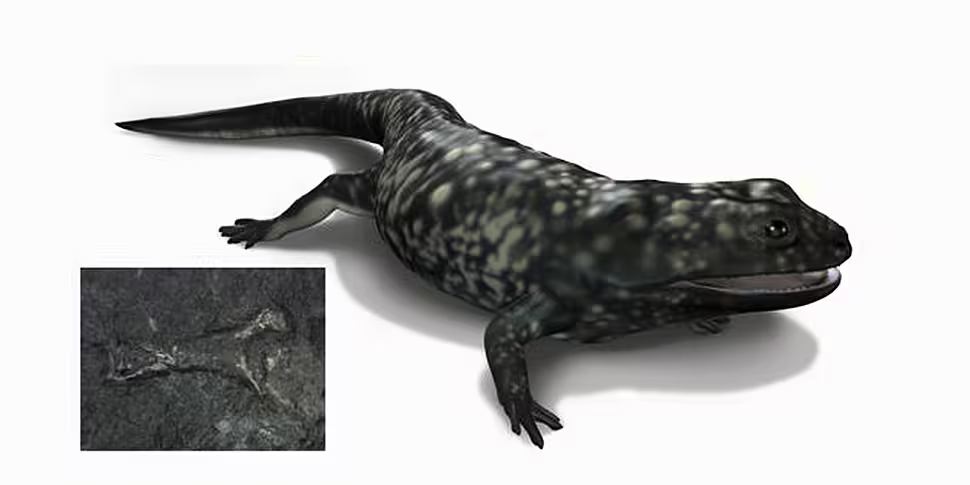The fossilized bones of a tiny amphibian-like creature been discovered in Co Clare.
It is believed the small creature would have scurried around the shores of the county 325 million years ago.
The find was made by Dr Eamon Doyle - geologist for the Burren and Cliffs of Moher UNESCO Global Geopark and Clare County Council.
The two small bones have been catalogued in the latest edition of the Irish Journal of Earth Sciences, published by the Royal Irish Academy.
This was done by Dr Doyle and fossil vertebrate researcher Aodhán Ó Gogáin of Trinity College Dublin.
The 10mm-long bones come from a leg, and possibly a hip bone, of a small amphibian that would have been an ancestor to the first lizards.
 Artist's interpretation of a carboniferous tetrapod from Scotland by Rachel Carr | Image: National Museums Scotland | Inset: Fossil amphibian bone from Co Clare
Artist's interpretation of a carboniferous tetrapod from Scotland by Rachel Carr | Image: National Museums Scotland | Inset: Fossil amphibian bone from Co ClareThese would ultimately have evolved into the dinosaurs 100 million years later.
The amphibian lived during a geological time called the 'Carboniferous Period', which lasted from 360 to 299 million years ago.
The amphibian would fit in the palm of your hand, and probably lived along a swampy coastline - either in an estuary or along rivers further inland.
It may have been washed out to sea during a storm or flood, with the bones eventually settling onto the muddy seafloor where they were buried and turned to fossils.
Clare County Council says: "This is an important period in the evolution of life as it is during this time that amphibians evolved from fish and first began to colonise the land.
"The fact that amphibian bones are rare finds in rocks of this age highlights the importance of Dr Doyle's discovery."









